EXECUTIVE SUMMARY

In 2030 our streets will reflect our City values. Our streets will be designed to address a climate emergency by emphasizing low or no carbon travel. Our streets will correct historic injustices in our transportation systems, because focusing on climate justice is focusing on racial justice. Our streets will add protection for people walking and bicycling and will be designed to prioritize an effective transit system that serves all trips. Our streets will be organized to enhance access to jobs. Though our streets will continue to serve car traffic, our future depends on our ability to increase the city’s population as projected in Minneapolis 2040 without the car traffic associated with growth. This plan does not eliminate places for people to drive, it simply rebalances space to incentivize and allow for low carbon transportation options.
The Minneapolis Transportation Action Plan (TAP) is a 10-year action plan to guide future planning, design and implementation of transportation projects for all people in all the ways they move around. This plan is shaped by Minneapolis 2040, the Climate Action Plan, Vision Zero, and Complete Streets.

2019 Source: Metropolitan Council Travel Behavior Inventory
We've set a mode shift goal to have 3 of every 5 trips taken by walking, biking, or transit.
The TAP outlines a vision for our streets in 2030. We did not constrain that vision with concerns about resources but rather articulated how, with additional partnerships, time, and funding, we can make our city reflect the vision for transportation laid out in Minneapolis 2040.
22% of the land area of the city is held in trust for the public within our streets; the TAP will leverage opportunities on our streets to reach our transportation goals.
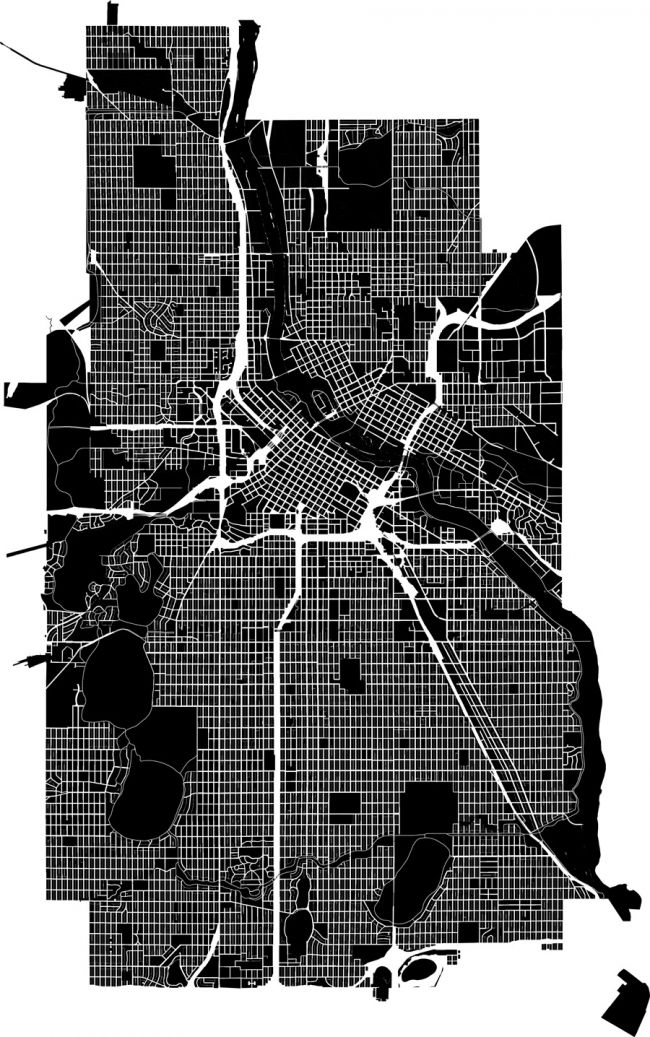
Transportation Goals
This plan is guided by six goals. These goals create the groundwork and will help guide transportation decisions by the City for the next 10 years. Every strategy and action will support one or more of these six goals:
 Climate
Climate  Safety
Safety  Equity
Equity  Prosperity
Prosperity  Mobility
Mobility  Active Partnerships
Active Partnerships
Strategies and actions
The strategies and actions in this action plan reflect a tension that exists in the street that results from competing uses for limited right of way. Reaching our transportation goals requires strategic action. Listed in this plan are 59 strategies and 323 actions that we plan to undertake in the next 10 years.
Each strategy is followed by several actions, detailing how we, along with our partners, will make tangible improvements on our streets. To reflect Minneapolis goals and values in our streets, the strategies and actions within this plan are focused on seven topics:
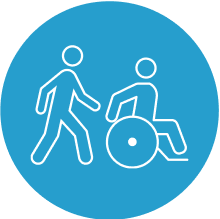
Walking
Promote a safe and inviting walking and rolling environment
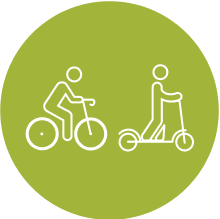 Bicycling
BicyclingIncrease the availability and safety for bicycling and micromobility travel
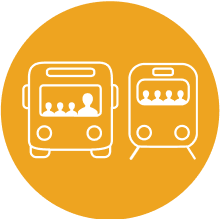 Transit
TransitDefine the Minneapolis transit network
 Technology
TechnologyInvite new technology to advance transportation options
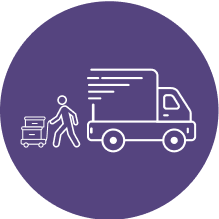 Freight
FreightManage increased freight needs while preserving the street
 Street Operations
Street OperationsImprove street operations and address competing demands
 Design
DesignDesign for people
Plan highlights
The TAP calls for action over the next 10 years to leverage our streets to reach citywide goals. When implemented, the actions in the TAP will help us create more travel options for more people.
Reach a mode share goal in pursuit of our climate goals where 3 of every 5 trips are taken by walking, rolling, bicycling or transit.
Improve the experience of people walking and rolling on our streets, with the creation of a plaza program, the inclusion of pedestrian lighting on all street reconstruction projects and actions focused on safer street crossings..
Realize a City-led transit vision that makes taking transit a more attractive and affordable option for more people.
Expand transit coverage so that 75% of residents are within a 5-minute walk of high frequency transit and 90% are within a 10-minute walk; implement transit advantages along all the high frequency transit corridors.
Use street design to provide a more comfortable and healthier environment for people – including more green infrastructure and trees in street projects.
Act quickly to improve our streets, focusing on paint and lower-cost infrastructure improvements to make change that improves street design and operations.
Increase the All Ages and Abilities Network nearly twofold, focusing on a low-stress and protected bicycle and micromobility network for all system users.
Update the Complete Streets Policy to incorporate freight, micromobility and green infrastructure.
Adopt a strong curbside management policy to prioritize space for people and value the competing demands for curb space.
Implement a network of mobility hubs where people can connect to multiple shared transportation options – like transit, bikes, scooters and cars.

